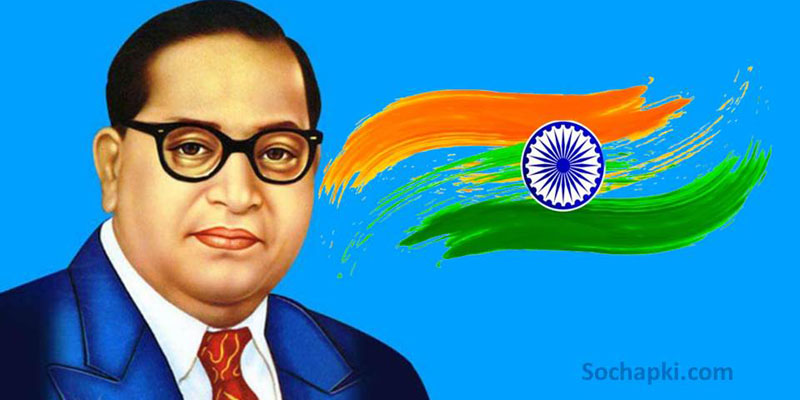Dr. Bhimrao Ramji Ambedkar, popularly known as Babasaheb Ambedkar, was a trailblazing scholar, social reformer, and the chief architect of the Indian Constitution. His remarkable academic journey and participation in groundbreaking social movements not only transformed his life but also reshaped India’s socio-political landscape.
In this article, we explore his educational qualifications in detail and shed light on his key contributions to pivotal movements aimed at social justice and equality.
Early Education: Laying the Foundation
Born on April 14, 1891, in Mhow, Madhya Pradesh, into the Mahar caste, Dr. Ambedkar’s early life was marked by adversity. Despite societal discrimination, his father, Ramji Sakpal, instilled in him the value of education.
-
Primary and Secondary Education:
Ambedkar started his schooling at a government institution in Satara, Maharashtra. Facing daily discrimination, he persevered and graduated from Elphinstone High School in Bombay in 1907, becoming the first Dalit to do so.
-
College Education:
In 1912, Ambedkar earned a Bachelor’s degree in Economics and Political Science from Elphinstone College, affiliated with the University of Bombay, paving the way for his future academic pursuits.
Advanced Studies Abroad
Dr. Ambedkar’s thirst for knowledge took him to world-renowned institutions, where he excelled despite financial and cultural challenges.
Columbia University (1913–1915)
With a scholarship from the Maharaja of Baroda, Ambedkar pursued an M.A. in Economics at Columbia University, New York. His thesis, “Ancient Indian Commerce,” reflected his interest in understanding economic systems.
- Ph.D. in Economics (1923):
Ambedkar completed his doctorate at Columbia, focusing on India’s monetary policies with his dissertation, “The Problem of the Rupee: Its Origin and Its Solution.”
London School of Economics (1916–1923)
In London, Ambedkar pursued higher studies in economics and law.
- D.Sc. in Economics (1923):
His second doctoral dissertation was a profound analysis of economic challenges facing India, further cementing his reputation as a scholar.
Gray’s Inn, London (1916–1923)
Simultaneously, Ambedkar studied law and became a barrister, understanding its significance in advocating for social justice.
Key Academic Achievements
- B.A. – Elphinstone College, Bombay University (1912)
- M.A. – Columbia University, New York (1915)
- Ph.D. – Economics, Columbia University (1923)
- Bar-at-Law – Gray’s Inn, London (1923)
- D.Sc. – Economics, London School of Economics (1923)
These qualifications underscore Ambedkar’s brilliance and relentless pursuit of excellence.
Honorable Movements: Championing Justice and Equality
Beyond his academic achievements, Dr. Ambedkar spearheaded several movements to challenge the caste-based discrimination entrenched in Indian society.
1. Mahad Satyagraha (1927)
The Mahad Satyagraha was one of Ambedkar’s first major social movements, advocating for the right of Dalits to access public water sources. The protest focused on allowing untouchables to draw water from the Chavdar Tank in Mahad, Maharashtra. Ambedkar’s leadership in this movement symbolized the fight against caste oppression and the assertion of basic human rights.
2. Kalaram Temple Entry Movement (1930)
Ambedkar led a protest demanding the entry of Dalits into the Kalaram Temple in Nashik, which was traditionally restricted to upper-caste Hindus. This movement was a pivotal step toward challenging religious discrimination and asserting equality in religious practices.
3. Poona Pact (1932)
Ambedkar played a crucial role in negotiating the Poona Pact with Mahatma Gandhi. The pact granted reserved seats for Dalits in legislative assemblies while ensuring their integration into the broader political system. Though controversial, it was a landmark agreement that highlighted Ambedkar’s strategic vision for Dalit empowerment.
4. Founding of the Independent Labour Party (1936)
Ambedkar established the Independent Labour Party (ILP) to address issues of economic exploitation and caste-based inequalities. The ILP contested elections and advocated for the rights of workers, peasants, and marginalized communities, combining economic and social justice.
5. Conversion to Buddhism (1956)
In one of his most significant moves, Dr. Ambedkar embraced Buddhism, rejecting the caste hierarchy ingrained in Hinduism. Along with millions of his followers, he converted to Buddhism in a historic ceremony in Nagpur, marking the start of the Dalit Buddhist movement. This act symbolized spiritual liberation and self-respect for the oppressed classes.
Legacy of a Visionary
Dr. Ambedkar’s educational accomplishments and his leadership in social reform movements are interwoven. His belief in education as a tool for empowerment guided his life’s work. He not only transformed his own life but also laid the foundation for a more equitable society.
Contributions to the Indian Constitution
As the chairman of the drafting committee of the Indian Constitution, Dr. Ambedkar embedded principles of justice, equality, and fraternity, ensuring safeguards for marginalized communities. His vision continues to guide India’s democratic ethos.
Advocacy for Universal Education
Dr. Ambedkar championed free and compulsory education, recognizing its role in breaking the cycle of poverty and discrimination. He emphasized the need for technical and higher education for all sections of society.
Conclusion
Dr. B. R. Ambedkar’s educational qualifications and leadership in honorable movements exemplify his commitment to learning and justice. From earning multiple degrees from prestigious institutions to leading transformative social movements, Ambedkar’s life is a beacon of hope and inspiration for generations.
His unparalleled contributions to education, law, and social reform continue to resonate, reminding us that knowledge, combined with courage, can change the world.


